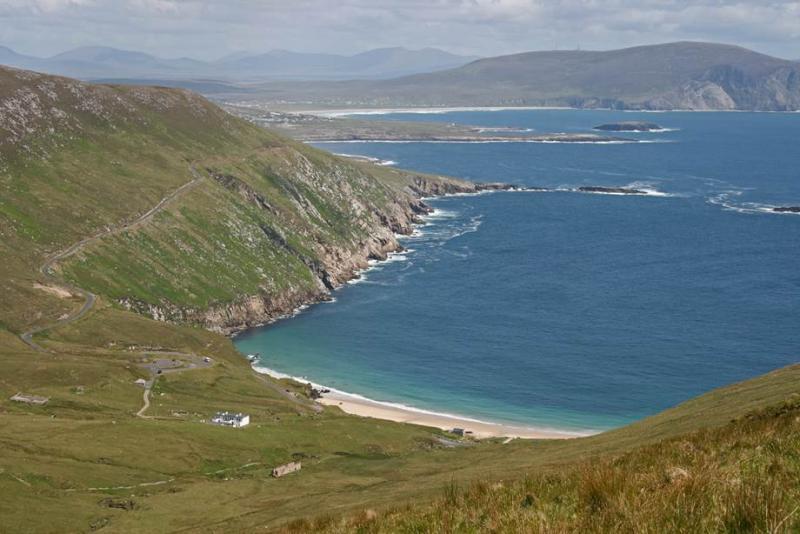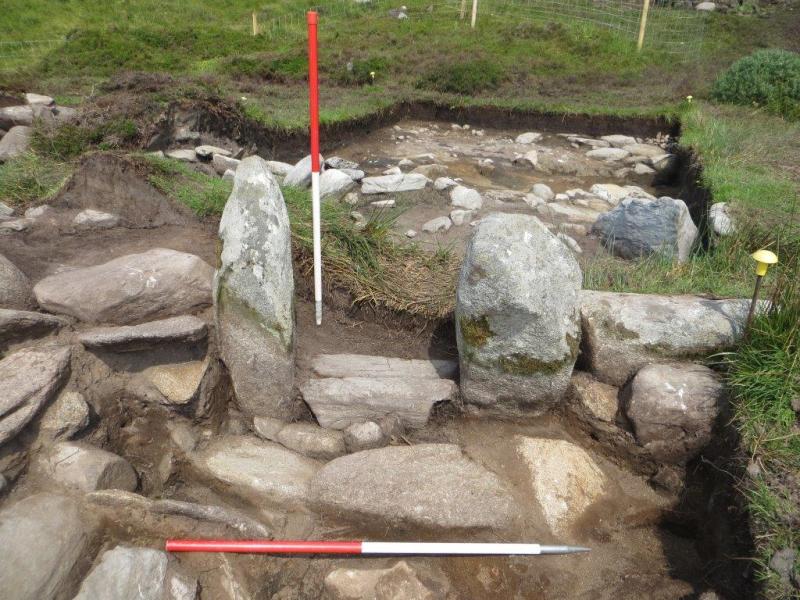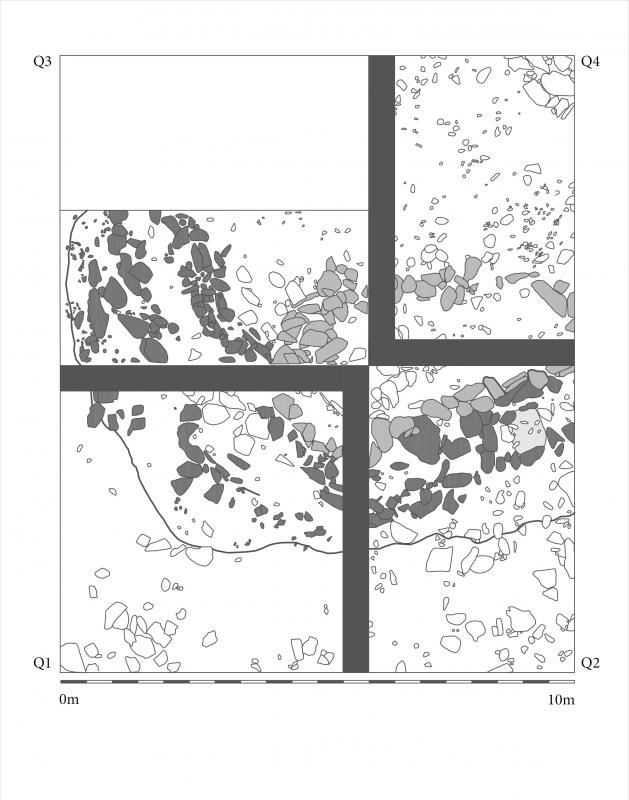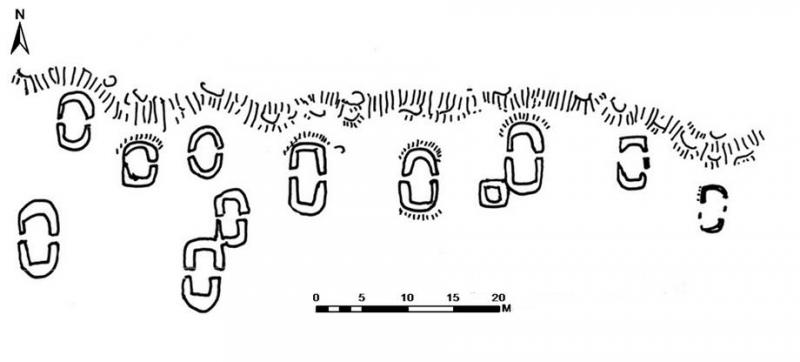April 13, 2015




Work during the winter months at Achill Archaeological Field School concentrates on completing the reports from the previous season and making plans for the next year’s season. This year has been no exception and good progress has been made, with all of the excavation reports now submitted to the licensing authority and the interactive survey of the Bunnacurry Graveyard nearing completion ready for the public launch of the database in May/June. Excitingly, a series of radiocarbon samples from the Cromlech Tumulus have been submitted to the Chrono Lab at Queens University Belfast, and these should be processed within a couple of months. The timetable for the 2015 season has been finalised and we certainly have an action packed summer ahead of us.
Introduction to Irish Archaeology 1 (18th – 23rd May)
This short course will involve excavating a second trench over the Danish Ditch pre-bog field wall that connects the Cromlech Tumulus site to the nearby Neolithic Court Tomb. Over four days we will excavate and record the field wall, the students performing a full excavation in miniature. On the fifth day we will take a tour of some of the wonderful array of archaeological sites to be found around the island.
Module 1 (25th May – 4th July) and Module 3 (25th May – 20th June)
The first set of accredited longer courses will concentrate on completing the work at the Cromlech Tumulus site. This year we will be completing work on the interior of the enclosure at the north west of the site, hoping to find more of the pits and postholes encountered during 2014 and, hopefully, identifying enough features to be able produce a detailed ground-plan of the buildings, cists and enclosure/s at the site. We will also be opening up the eastern portion of the site for the first time in order to examine the various stone structures that can be seen protruding from the bog. This will be a really enthralling part of the project as we hope to finally be able to determine whether there is a megalithic structure at the site, or if the visible stonework belongs to buildings of a different nature all together.
Most weeks students will spend four days of each week working on site learning to excavate with the fifth day spent on guided field trips to various archaeological sites on Achill, Achillbeg and the surrounding areas. During the fourth and sixth weeks of the course, students will work at the Field School Lab on a variety of tasks including washing and labelling artefacts, digitising the site drawings and written record and processing environmental samples. In addition, they will be given a series of lectures that present an overview of Irish archaeology from the first colonisation during the Mesolithic period right up until the early parts of the twentieth century. Additional guest lectures will present cutting edge research being undertaken in Ireland by various friends and colleagues of the Field School; specialist tutors will present short courses on specialist areas such as ceramic analysis, using GIS in archaeology and environmental sampling procedures (contact AAFS for details), together with optional weekend Tours that are available for students wishing to explore some of the premier archaeological sites in the west and midlands of Ireland (contact AAFS for details). By completing a series of weekly quizzes and a research paper students on Module 1 will be eligible to receive 9 semester credits and students on Module 3 will be eligible to receive 6 semester credits.
Module 5 (22nd June – 4th July)
This short two weeks course will involve a week of excavation followed by a week of post excavation tasks and analysis, providing a very compact overview of the whole process of archaeological investigation. During the first week the students will spend four days excavating a third trench over the Danish Ditch pre-bog field wall that connects the Cromlech Tumulus site to the nearby Neolithic Court Tomb. The fifth day will be spent on an all-day tour of some of the island’s archaeological sites. During the second week, the students will work in the computer lab for four days preparing the site archive, digitising the field drawings, processing environmental samples and cleaning and labelling artefacts. They will then prepare the full account of the trench they excavated ready for insertion into this season’s excavation reports. A fifth day will be spent on a second full day tour of the archaeological sites on the island. 3 semester credits are available for completing this course.
Module 2 (6th July – 15th August) and Module 4 (6th July – 1st August)
The second set of accredited courses will see the field school shift away from Slievemore over to Keem Bay at the western end of the island. This location is often claimed to be one of the most beautiful places in the whole of Ireland and it certainly has always been a firm favourite with our students. This year we will be investigating one of the substantial house foundations that form part of a small village located behind the imposing twentieth century coast guard station. This village remains a bit of an enigma with local opinion divided on whether or not it was a permanent settlement or a ‘booley village’ using only during the summer months as part of the seasonal pattern of transhumant farming that took place on the island until the early years of the twentieth century. The exact age of the village is not known although around 40 houses are shown on the 1838 Ordnance Survey map, suggesting an eighteenth century origin or earlier. The village was deserted in the middle of the nineteenth century, coinciding with the arrival on Achill by the famous ‘Captain’ Charles Boycott, who took up residence in Keem Bay where he initially lived in an Iron House, later building an imposing manor house. By excavating one of the 40 houses and some of the associated lazy beds (cultivation ridges), it is hoped we can clarify when occupation first began (could this stunningly beautiful location really have been unoccupied before the early nineteenth century?) and to establish whether the settlement was a permanent village or a location only of seasonal residence. Trial excavations in 2009 provided a tantalising glimpse of the quality of the archaeology and the quantity of artefacts that we hope to find this season, and this excavation has our field staff quite literally buzzing with excitement. Whilst the location of the excavation has changed the format of these courses follows that described above for the first two modules, and again 9 semester credits are available for the 6 week course and 6 semester credits are available for the four week course.
Module 6 (3rd – 15th August)
As with Module 5 this short, two weeks course will involve a week of excavation followed by a week of post excavation tasks and analysis, providing a very compact overview of the whole process of archaeological investigation. During the first week the students will spend four days excavating a trench within the village at Keem Bay. The fifth day will be spent on an all day tour of some of the island’s archaeological sites. During the second week the students will work in the computer lab for four days preparing the site archive, digitising the field drawings, processing environmental samples and cleaning and labelling artefacts. They will then prepare the full account of the trench they excavated ready for insertion into this seasons excavation reports. A fifth day will be spent on a second full day tour of the archaeological sites on the island. Three semester credits are available for completing this course.
Introduction to Irish Archaeology 2 (17th – 22nd August)
This short course will involve excavating a trench over one of the smaller buildings in Keem Bay that are not thought to form part of the village itself. Over four days we will excavate and record a trial trench through one of these buildings in the hope to obtain vital information about the building’s date and function, the students performing a full excavation in miniature. On the fifth day we will take a tour of some of the wonderful array of archaeological sites to be found around the island.
Bare Bones (17th – 29th August)
This two weeks course involves a mixture of excavation and surveying tasks. Students will spend their first week working on the trial excavation of one of the smaller structures in Keem Bay set apart from the village, working alongside the students from Introduction to Archaeology 2 course. During the second week students will undertake a variety of surveying tasks followed up by some time spent in our computer lab processing the results of the excavation and surveying work using a range of software. One day of each week will be set aside for a guided tour of some of Achill’s marvellous archaeological sites.
A limited number of places are still available for all of this year’s courses, with some modules now filling up rapidly, so early booking is advised to avoid disappointment. Please visit achill-fieldschool.com for more details or email info@achill-fieldschool.com with any enquiries. It’s going to be a fantastic summer on Achill and we would be delighted to have you join us!